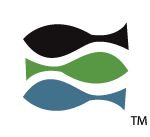By Emily Eisbruch and the Grouper Team
Estimated reading time: 5 minutes
In 2023, when a community group formed to improve Grouper documentation, Noelette Stout of Idaho State University stepped up to coordinate the effort. “I wanted to contribute to the community and provide any assistance I could offer,” Noelette explained. “Grouper has been such an invaluable tool for us, so I was eager to help. Since I’m not a programmer, this seemed like a great opportunity to give back to the team in an alternative way.”
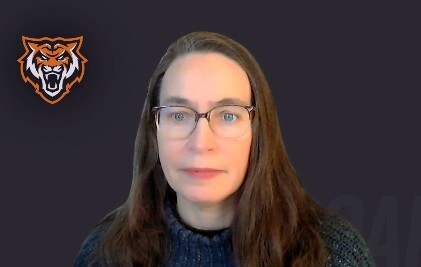
Grouper is an enterprise group and access management system that simplifies access management by letting you use the same group or role in many places in your organization. The software has offered an expanding array of capabilities in recent years as Grouper’s user base grew, and as the Grouper project team, led by Chris Hyzer of University of Pennsylvania, responded to the community’s use cases. Grouper rules, provisioning, deprovisioning, auditing, and authentication are just a few of the areas that have been enhanced.
Grouper’s wiki-based documentation,while voluminous and helpful, needed updating and reorganizing to improve users’ experience.
Refocusing and Refining Project Documentation
“We identified some gaps and some areas that needed restructuring,” Chris Hyzer noted. Past Grouper documentation improvement efforts provided significant advances with a major contribution being the Grouper Deployment Guide, which was developed in 2017 by a team that Bill Thompson, then of Lafayette College, led.
The Grouper documentation team that formed in 2023 conducted a survey to gauge community needs. The group meets bi-weekly on Zoom, maintains an active Slack channel to field new ideas, and tracks some of its work on a public wiki page. Constantly reviewing the recent changes in the wiki, as well as new needs for documentation, motivates the team to continue making progress.
Deployers need to update the Grouper product at least quarterly to make sure the deployments have the latest security fixes and up to date libraries. The Grouper Team archived documentation for people running expired versions of Grouper, so it is still possible to get the information they need. Going forward, documentation will focus on current features, which will help keep the wiki fresh and well-organized. There is now a dedicated “Grouper developers” wiki to separate internal development documents from the user-facing documentation. Even though the working group mostly focuses on the wiki, they also discuss other documentation like Swagger for web services and help text, in the Grouper user interface.
Making Great Progress
In a cool use of visualization technology, Chad Redman of Unicon developed a Grouper documentation heat map.“The heat map showed the relationships between Grouper documentation wiki pages, and also the ages of related articles,” Chad explained. “Pages that were out of date were removed, rewritten, folded into other pages, or moved into the internal development space.” The following two images show our progress by having fewer disconnected circles of pages, and the colors are more yellow (recent) and less purple (old).

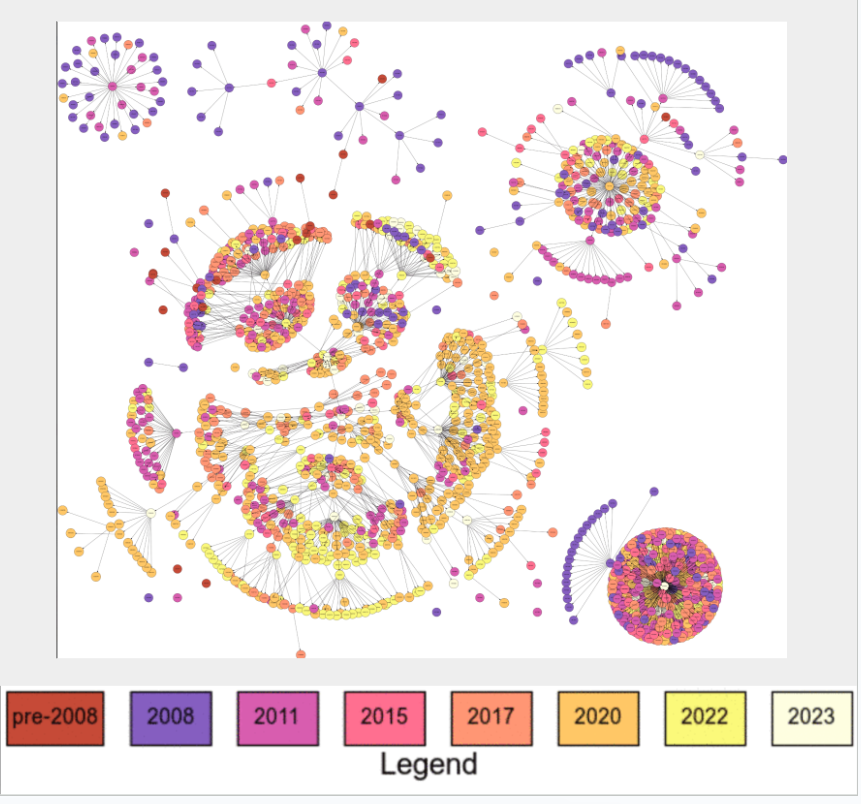
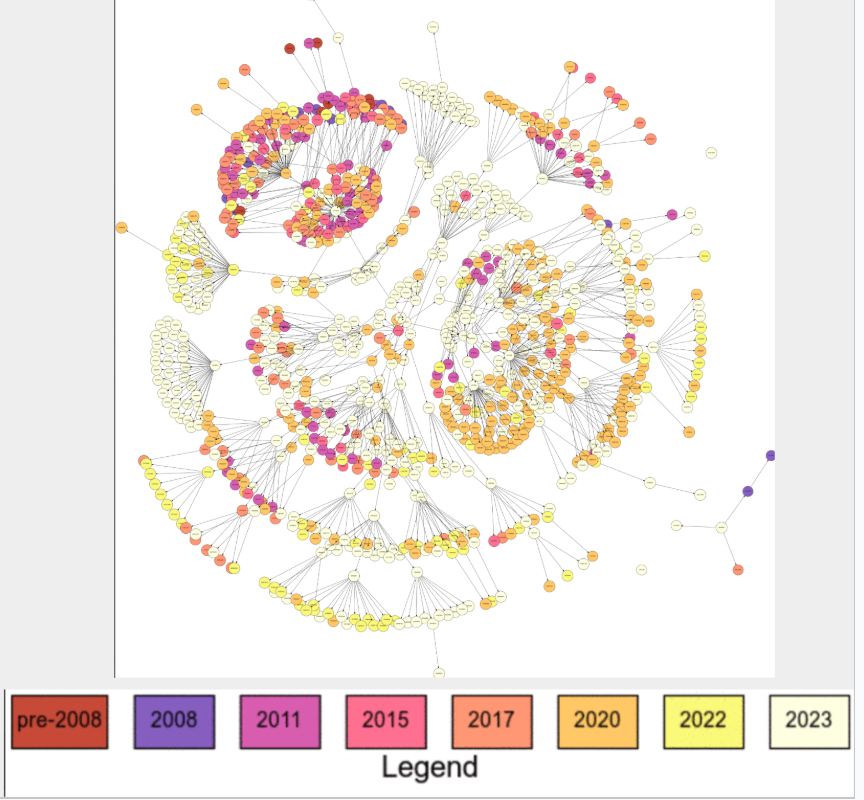
“The team has shown tremendous dedication, and it has been impressive to see the improvements,” Noelette observed. “We’ve had a core group of volunteers who have put in so much of their valuable time to improve the documentation as well as the site navigation.”
“A number of the newer features have been documented, which has been much appreciated, based on the feedback we’ve received,” she continued. “The site organization and navigation improvements have made it much easier to search for information. We’ve got a great team. Their hard work really shows.”
Steve Zoppi, Internet2 Associate Vice President for Services Integration and Architecture, provides a big-picture view of the Grouper documentation effort. “In response to the changing community needs over the past decade, the Grouper solution has expanded and evolved. The nature of open-source programs is that the documentation quality can lag the perceived higher-priority of adding features and functionality,” he said. “That same project and its dedicated community recognized and responded to this reality by streamlining, refocusing and refining the project documentation. The outstanding result of their multi-year effort is a testament to the dedication and knowledge of our vibrant community and the development team.”

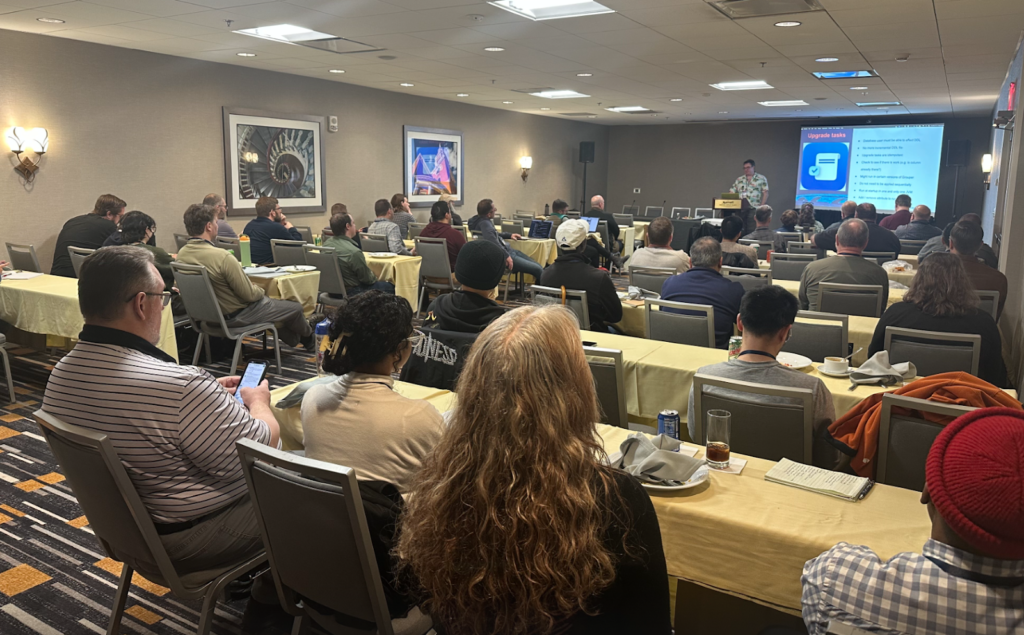
About Grouper
Grouper is an enterprise group and access management system that simplifies access management by letting you use the same group or role in many places in your organization. Grouper is part of the InCommon Trusted Access Platform, an identity and access management suite of software designed to integrate with existing systems. Our roadmap is based on community input. Grouper, the access management component of the InCommon Trusted Access Platform, evolves to meet the community’s needs.
